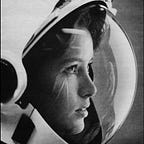If Jupiter and Saturn Collide
A simulation shows the results of this destructive event
The largest ocean in the Solar System exists in an unexpected place. It is unlike any ocean on Earth, or even like those on a promising lunar world like Europa. This ocean resides somewhere beneath the soft bitten-peach atmosphere of Jupiter, vaporous and crystal-colored, made not of water but of liquid hydrogen. The hydrogen becomes a liquid as both temperatures and pressures mount beneath Jupiter’s atmosphere. Like the sun, Jupiter is made mostly of hydrogen and helium.
This composition is what sets the four Jovian planets — Jupiter, Saturn, Uranus, and Neptune — apart from the four inner rocky planets. Enormous, billowing layers of gas surround small but dense cores. As dreamy as it would be to visit a planet like Saturn, any traveler would find that there is no surface on which to land their craft. Neither can they fly through the atmospheres of gas giants since the intense environment would lead to fatal malfunctions. Spacecraft entering would be melted and crushed, then inevitably vaporized before much time had passed. They are beautiful worlds indeed, but they echo like pieces of art in a shadowy museum: look but do not touch.
For this reason, and for the breadth of their distance from Earth, we haven’t yet been able to discern much of the…
